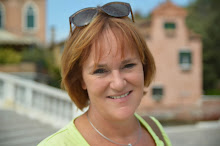- green construction paper A2 size
- scissors and glue
- leftovers paper or Christmas scrapbook paper
- fine markers in black and silver
Christmas carolers are individuals or groups who sing traditional holiday songs, known as carols, during the Christmas season, often traveling from house to house or performing in public spaces.
- Cut the parts of the singers: head with the nose up and open mouth, thin arms and legs, dress or suit and black shoes or boots.
- Cut a music book and fold it.
- Draw the title on it: Christmas Carols.
- Draw some staves with musical notes.
- Glue the parts on the large green sheet. Paste three-dimensional if possible: paste the dress with folds; arms come out of sleeves holding the 3D pasted music book.
- Draw nostrils with a black marker and shoe laces with the silver one.
- Make a large group work of these Christmas carolers!






.jpg)

.jpg)



.jpg)
.jpg)








.jpg)
.jpg)
.jpg)
.jpg)
.jpg)
.jpg)













.jpg)


.jpg)
.jpg)





